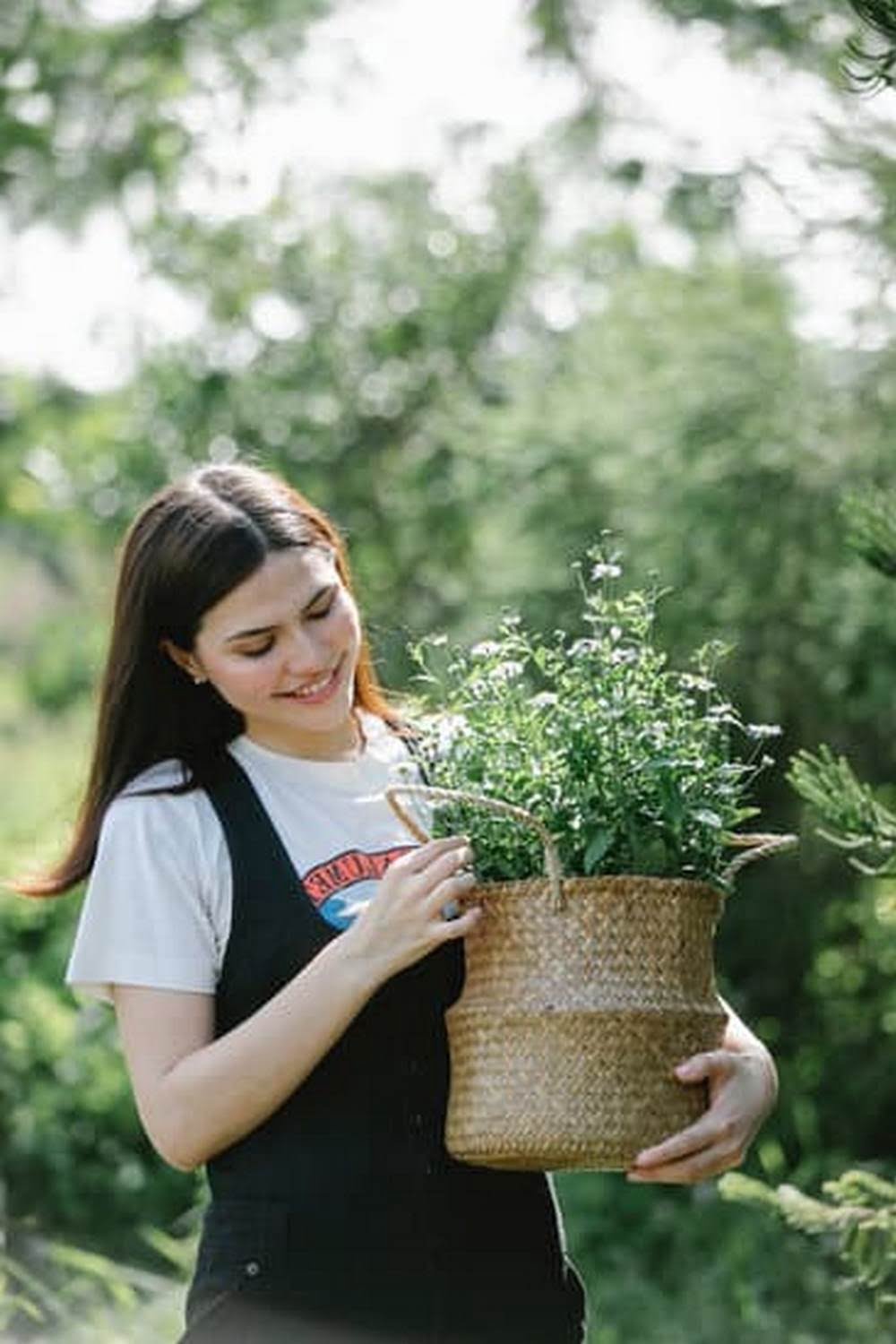Are you interested in starting your own vegetable garden but don’t know where to begin? Vegetable gardening in garden beds is a great way to grow your own fresh produce right at home. Whether you have limited space or simply prefer the organization and structure of raised beds, this article will guide you through the process of creating and maintaining a successful vegetable garden.
When it comes to starting a vegetable garden, choosing the right location for your garden beds is crucial. The amount of sunlight, access to water, and proximity to your home are all important factors to consider. In this article, we will explore how to select the best location for your garden beds, ensuring that your vegetables will thrive.
Once you have chosen the perfect spot for your garden, the next step is to prepare the soil. We will discuss the importance of soil quality and provide tips on how to enrich and improve the soil in your garden beds. With nutrient-rich soil, your vegetables will have a strong foundation for healthy growth and abundant harvests. So let’s dive into the world of vegetable gardening in garden beds and get started on growing your own delicious produce.
Choosing the Right Location for Your Garden Beds
When it comes to vegetable gardening, the location of your garden beds is crucial to the success of your plants. Here are some key considerations to keep in mind when choosing the right location for your garden beds:
1. Sunlight: Most vegetables require at least 6-8 hours of sunlight per day to thrive. Choose a spot in your yard that receives ample sunlight, preferably in the morning and early afternoon.
2. Drainage: It’s important to select an area with good drainage to prevent waterlogging, which can lead to root rot and other issues. Avoid low-lying areas that tend to accumulate water.
3. Access to water: Make sure your garden beds are located near a convenient water source, such as a hose or irrigation system, to ensure easy access for regular watering.
4. Proximity to the kitchen: Consider placing your garden beds close to your kitchen for easy access when harvesting vegetables for meals.
5. Protection from wind: While some airflow is beneficial for preventing diseases, excessive wind can damage delicate plants. Consider planting near a fence or building for some protection from strong winds.
By taking these factors into account, you can choose the best location for your garden beds and set yourself up for a successful vegetable gardening experience. Remember that different vegetables may have unique needs when it comes to sunlight and soil conditions, so plan accordingly when selecting the location for each type of plant in your garden beds.
Preparing the Soil for Vegetable Gardening
One of the most important steps in vegetable gardening is preparing the soil for your garden beds. The quality of your soil can directly impact the health and success of your vegetables. Before planting, it’s essential to ensure that the soil is fertile, well-draining, and rich in organic matter.
To start, you’ll want to test the pH of your soil to determine its acidity or alkalinity. Most vegetables prefer a slightly acidic to neutral pH level, so you may need to make adjustments by adding amendments such as lime or sulfur. Additionally, it’s crucial to incorporate plenty of compost or well-rotted manure into the soil to improve its texture and nutrient content.
Another important aspect of soil preparation is ensuring proper drainage. Raised garden beds can help with this by providing better drainage than traditional in-ground gardens. When building raised beds, be sure to use a mix of topsoil, compost, and other organic materials to create a loose, well-aerated growing medium for your vegetables.
In addition to testing and amending the soil, it’s also essential to clear the area of any weeds or debris before planting. Weeds can compete with your vegetables for nutrients and water, so taking the time to remove them will give your plants a better chance at thriving. By taking these steps to prepare your soil properly, you can set your vegetable garden up for success from the very beginning.
| Aspect | Information |
|---|---|
| pH Testing | Determine acidity/alkalinity; add lime or sulfur if necessary |
| Compost/Moisture | Incorporate plenty of compost or well-rotted manure; ensure proper drainage |
| Weed Removal | Clear area of any weeds or debris before planting |
Selecting the Best Vegetables for Your Garden Beds
When it comes to selecting the best vegetables for your garden beds, there are a few factors to consider. First, you’ll want to think about what you and your family enjoy eating. After all, the main goal of vegetable gardening is to enjoy the fruits of your labor. Consider growing vegetables that are expensive or hard to find in the grocery store, as well as those that are easy to grow and maintain.
Another factor to consider when selecting vegetables for your garden beds is the climate and growing conditions in your area. Some vegetables thrive in cooler temperatures, while others prefer hot and sunny conditions. Take into account the average temperature, sunlight, and water availability in your region when choosing which vegetables to plant in your garden beds.
Lastly, consider the space available in your garden beds. Some vegetables, such as tomatoes and zucchinis, can spread out and take up a lot of space, while others, like lettuce and radishes, can be grown in smaller areas. Make sure to plan accordingly and give each type of vegetable enough room to grow and flourish.
| Spring Vegetables | Summer Vegetables | Fall Vegetables |
|---|---|---|
| Lettuce | Tomatoes | Carrots |
| Radishes | Zucchini | Broccoli |
| Spinach | Cucumbers | Pumpkins |
By considering these factors and doing some research on different vegetable varieties, you can select the best vegetables for your garden beds that will flourish in your specific growing conditions and provide you with a bountiful harvest.
Planting and Caring for Your Vegetable Garden
Now that you have prepared your vegetable gardening garden beds and selected the best vegetables for your space, it’s time to plant and care for your garden. Proper planting and maintenance will ensure a bountiful harvest of fresh, delicious produce for you and your family to enjoy.
Planting Your Vegetables
When planting your vegetables in garden beds, be sure to follow the spacing recommendations on the seed packets or plant labels. Proper spacing will allow your plants to receive adequate sunlight, water, and nutrients from the soil. It’s also important to plant at the appropriate depth and cover the seeds or roots with soil according to their specific requirements.
Caring for Your Garden
Once your vegetables are planted, it’s essential to provide them with proper care in order to promote healthy growth. This includes regular watering, weeding, and fertilizing as needed. You may also need to provide support for vining or tall plants, such as trellises or stakes. Keeping an eye on your garden and addressing any issues promptly will help ensure a successful growing season.
Protecting Your Plants
In addition to regular maintenance, it’s important to protect your vegetable garden from pests and diseases. Consider using natural pest control methods such as companion planting, physical barriers, or organic sprays.
Inspecting your plants regularly for signs of trouble can help you catch any potential issues early on and take action before they become serious threats to your garden beds. By giving your vegetable garden the attention it needs, you can enjoy a fruitful harvest of homegrown produce throughout the growing season.
Maintenance Tips for Healthy Garden Beds
After you have planted your vegetable garden in its garden beds, it is important to maintain their health and vitality. To keep your garden beds in top shape, here are some maintenance tips to follow:
1. Irrigation: Proper watering is crucial for the health of your vegetable garden. Make sure to water your garden beds regularly, especially during hot and dry periods. Consider using a drip irrigation system or soaker hoses to deliver water directly to the base of the plants and reduce water waste.
2. Weeding: Regularly check for and remove any weeds that may be competing with your vegetables for water, nutrients, and sunlight. Mulching is also a great way to suppress weeds and retain soil moisture in between the plants.
3. Fertilization: Periodically fertilize your vegetable garden beds with organic matter or a balanced fertilizer to replenish the nutrients that your plants have used up. Be sure to follow the recommended application rates for best results.
4. Pest and Disease Control: Keep an eye out for common pests and diseases that can affect vegetable gardening garden beds, such as aphids, slugs, powdery mildew, and blight. Consider using natural pest control methods or introducing beneficial insects to keep these problems at bay.
By following these maintenance tips, you can ensure that your vegetable gardening garden beds remain healthy and productive throughout the growing season.
Common Pests and Diseases in Vegetable Gardening
One of the biggest challenges that gardeners face when it comes to vegetable gardening garden beds is dealing with pests and diseases. Pests such as aphids, caterpillars, and snails can wreak havoc on your plants, while diseases like powdery mildew and blight can quickly spread and destroy your hard work. It’s important to be proactive in preventing and managing these issues to ensure a successful harvest.
There are several methods for controlling pests in your garden beds without resorting to harmful chemicals. One approach is to encourage natural predators like ladybugs and lacewings by planting flowers that attract them, such as marigolds and sunflowers. You can also use physical barriers like row covers to protect your plants from insect damage. Additionally, practicing crop rotation and proper spacing between plants can help reduce the risk of pest infestations.
In terms of disease management, prevention is key. Avoid overwatering your garden beds, as excess moisture can create the perfect conditions for fungal diseases to thrive. It’s also important to remove any diseased plant material promptly to prevent the spread of infection.
Using disease-resistant varieties of vegetables can also help minimize the risk of outbreaks in your garden. By staying vigilant and taking proactive measures, you can minimize the impact of pests and diseases on your vegetable garden and enjoy a bountiful harvest.
Harvesting and Enjoying the Fruits of Your Garden Beds
Once all the hard work of preparing, planting and caring for your vegetable garden beds has come to fruition, it’s time to enjoy the fruits of your labor. Harvesting fresh vegetables from your garden beds is not only satisfying but also rewarding. Here are some tips for ensuring a successful and enjoyable harvest from your vegetable gardening garden beds.
Timing Your Harvest
One of the keys to enjoying the best flavors and textures from your homegrown vegetables is timing. Each type of vegetable has its own optimal harvesting time, so it’s essential to familiarize yourself with the specific requirements of the vegetables you have planted in your garden beds. For example, tomatoes should be picked when they are fully colored but still firm, while lettuces should be harvested just before they reach full maturity to ensure crispness.
Harvesting Techniques
Proper harvesting techniques can make a significant difference in the quality and longevity of your homegrown produce. When picking vegetables such as peppers or cucumbers, use sharp pruning shears or a knife to avoid damaging the plant. For leafy greens like lettuce or kale, gently cut just above the soil level to ensure continued regrowth throughout the season.
Enjoying Your Harvest
After harvesting your fresh vegetables from your garden beds, it’s time to savor the flavors of your homegrown produce. Whether you choose to simply enjoy them raw in salads or as snacks, or get creative with cooking and preserving techniques such as canning or pickling, there are countless ways to incorporate your freshly harvested vegetables into delicious meals for you and your family. Remember that nothing tastes better than fresh-picked produce straight from your own garden beds.
Tips for Extending Your Vegetable Gardening Season
Extending your vegetable gardening season can be a rewarding endeavor that allows you to enjoy fresh produce for a longer period of time. One way to do this is by using garden beds to create the ideal environment for your vegetables to thrive. By following some simple tips, you can make the most of your garden beds and prolong the growing season.
First, consider using raised garden beds, which offer several advantages for extending the vegetable gardening season. These types of beds provide better drainage and soil warmth, which can help to prevent frost damage and allow you to start planting earlier in the spring. In addition, raised garden beds can also be covered with protective materials like row covers or plastic tunnels to shield plants from cold temperatures, further extending the growing season.
Another tip for extending your vegetable gardening season is to choose cold-hardy vegetables that are well-suited for late-season planting. Vegetables like kale, spinach, carrots, and radishes can withstand cooler temperatures and even improve in flavor after being exposed to light frosts. By selecting these varieties and planting them in your garden beds at the right time, you can continue harvesting fresh produce well into the fall and even early winter.
Lastly, implementing season extension techniques such as using cloches or hoop houses can help protect your plants from chilly temperatures and extend their growing period. These methods can create a microclimate within your garden beds, allowing you to grow heat-loving crops for a longer time or even start planting earlier in the spring.
By taking advantage of these tips for extending your vegetable gardening season in garden beds, you can enjoy a bountiful harvest well beyond the typical growing period.
Conclusion
In conclusion, starting a vegetable garden in garden beds can be a truly rewarding experience. Not only does it provide you with the opportunity to grow your own fresh and healthy produce, but it also allows you to connect with nature and enjoy the satisfaction of seeing your hard work pay off. By following the steps outlined in this article, you can create a thriving and bountiful vegetable garden that will bring joy and fulfillment to your life.
Choosing the right location and properly preparing the soil are crucial steps in ensuring the success of your vegetable gardening efforts. Additionally, selecting the best vegetables for your garden beds and learning how to plant and care for them will set you on the path to a fruitful harvest. It’s important to remember that maintenance is key, as healthy garden beds are less susceptible to pests and diseases, allowing you to enjoy a more abundant yield.
As you watch your vegetables grow and mature, there is nothing quite like the feeling of harvesting them and enjoying the fruits of your labor. Whether you are savoring them fresh from the vine or preserving them for future use, there is a great sense of satisfaction in knowing that you have grown these nutritious foods yourself.
With some tips for extending your vegetable gardening season, you can continue to reap the rewards of your hard work for even longer. So go ahead and start your vegetable gardening journey – it’s an experience that will bring joy, health, and wellness into your life.
Frequently Asked Questions
What Is a Good Layout for a Vegetable Garden?
A good layout for a vegetable garden should consider factors such as sunlight, water access, and the types of vegetables being grown. It’s important to space the plants to allow for proper growth and airflow, and to make sure that taller plants don’t shade smaller ones.
What Vegetables Can Grow Together in a Garden Bed?
When planning which vegetables can grow together in a garden bed, it’s important to consider their compatibility in terms of sunlight, water intake, and nutrient needs. For example, planting tomatoes with basil can help repel pests, while pairing root vegetables like carrots and onions can be beneficial due to their different root depths.
How Deep Should a Garden Bed Be for Vegetables?
The depth of a garden bed for vegetables will depend on the types of vegetables being grown. Generally, a depth of at least 6-12 inches is recommended to accommodate most vegetable roots. However, for root vegetables like carrots or potatoes, deeper beds (up to 18 inches) may be necessary to allow for adequate root development.

If you’re looking to get into vegetable gardening, or are just looking for some tips on how to make your current garden better, then you’ve come to the right place! My name is Ethel and I have been gardening for years. In this blog, I’m going to share with you some of my best tips on how to create a successful vegetable garden.





